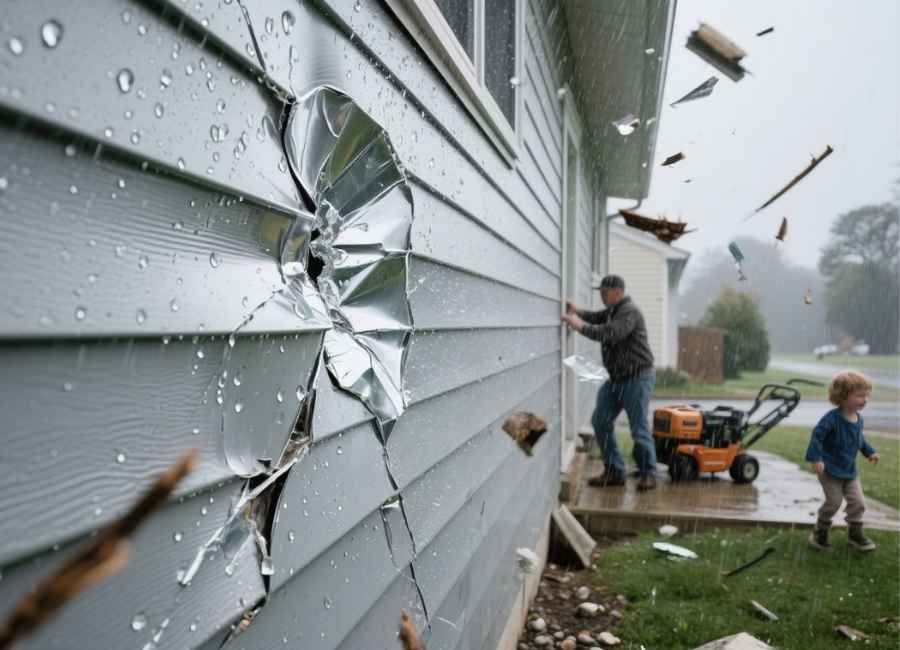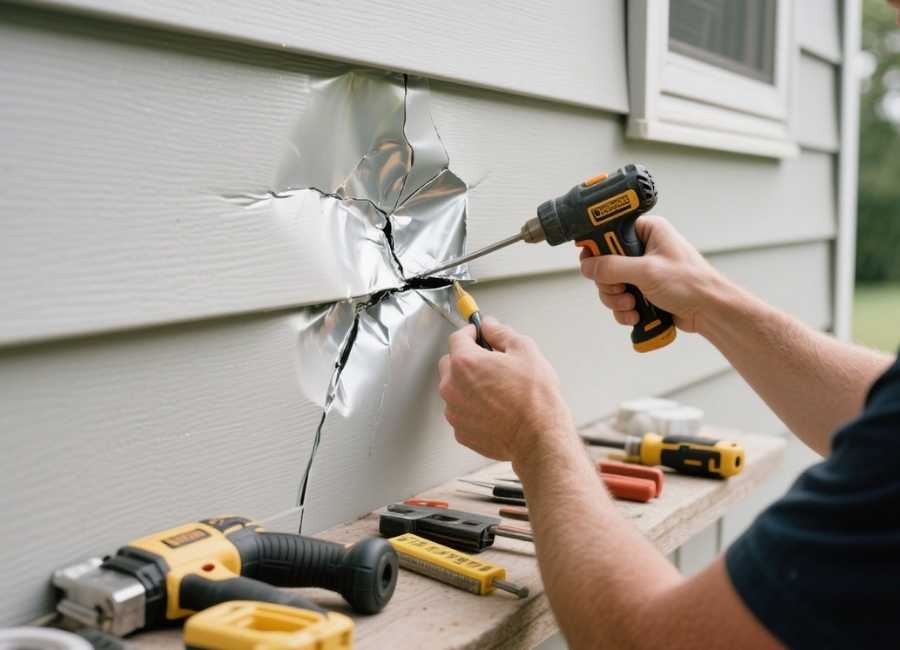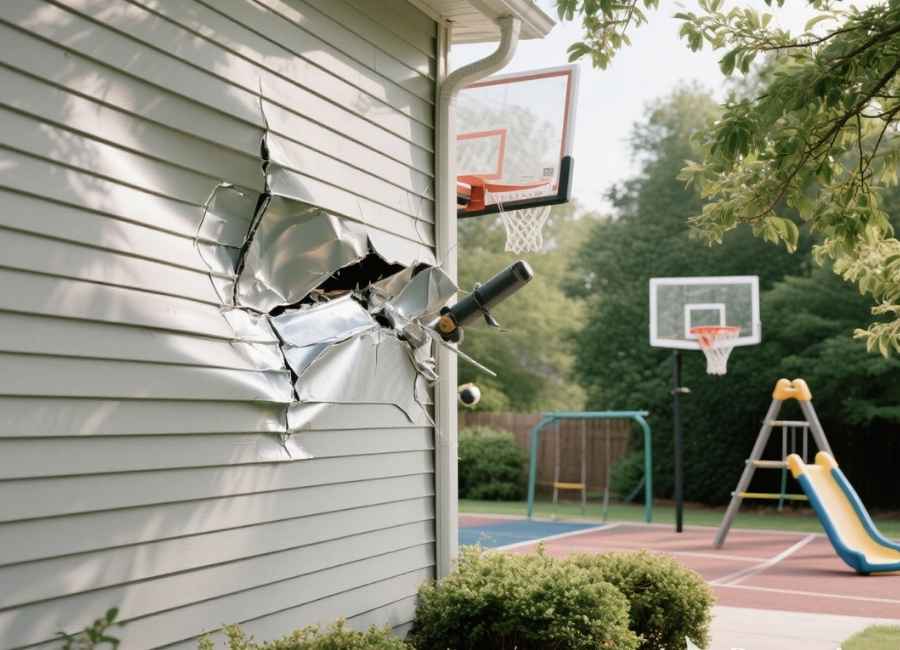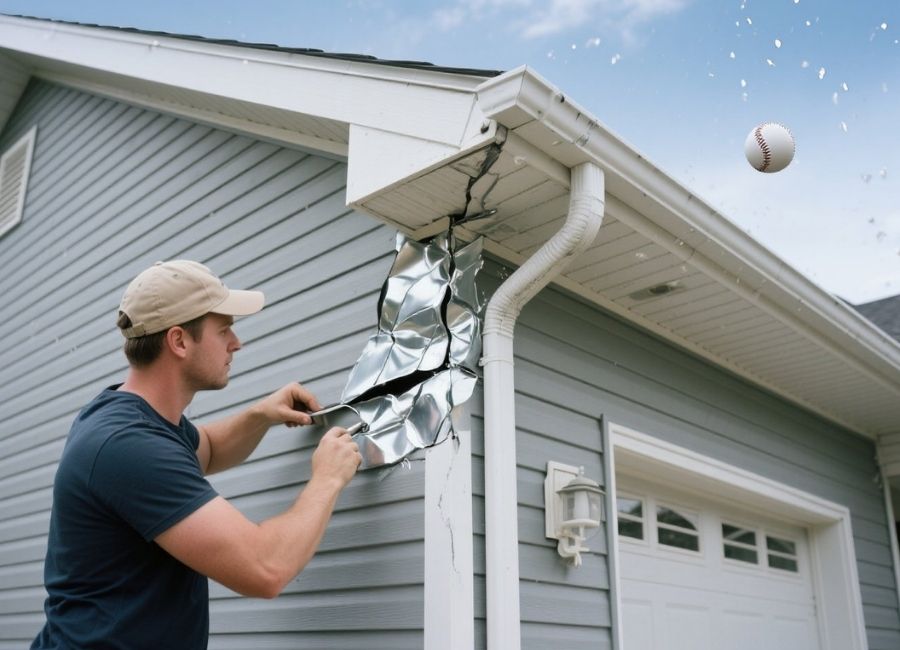Your home’s siding plays a critical role in protecting it from the elements while enhancing its curb appeal. Metal siding, known for its durability and sleek finish, is especially popular among homeowners seeking a low-maintenance solution. However, even the best metal siding isn’t immune to damage. From rogue baseballs to hail storms, dents are a common issue that can detract from your home’s appearance.
If you’ve found yourself staring at an unsightly dent in your metal siding, don’t worry. This guide will walk you through the causes of dented siding, how to fix it, and how to prevent future damage. By the end, you’ll feel confident about restoring your siding to its original condition.
Why Metal Siding Gets Dented
Metal siding, although strong, can still fall victim to various factors. Common causes of dents include:

- Hail damage: One of the most frequent culprits, hailstorms can leave noticeable dents, especially when the siding wasn’t installed with impact resistance in mind.
- Flying debris: Objects like branches or pebbles kicked up by strong winds can collide with your siding.
- Human activity: Lawn equipment, children playing near the house, or even accidental knocks can result in minor dents.
- Age and wear: Over time, metal siding can lose its structural integrity, becoming more susceptible to damage.
Understanding what caused the dent helps in assessing its severity and determining the best course of action for repair.
Tools and Materials You’ll Need for Repairing Dented Metal Siding
Before you roll up your sleeves, gather the essential tools and materials. These include:
- A rubber mallet or wooden block
- Aluminum or stainless-steel cleaner (to remove dirt or oxidization)
- Heat-resistant gloves
- A handheld hairdryer or heat gun
- Dry ice (optional, for thermal dent removal)
- Touch-up paint matching your siding’s color
- A step ladder (for higher dents)
- Sandpaper or a sanding block
Having everything ready ensures a smooth repair process, with no unnecessary interruptions.
How to Fix Dented Metal Siding
Now that you’ve gathered all the materials, it’s time to get to work. Depending on the severity and location of the dent, choose from one of the following methods.

1. The Rubber Mallet Technique
This method is ideal for small to moderate dents located on flat parts of the siding.
Steps to follow:
- Clean the dented area with an aluminum or stainless-steel cleaner to remove debris.
- Use your hands to check if the siding’s backside is accessible. If so, hold a wooden block or thick rag on the outer part of the dent.
- From the interior, gently tap the dent back into place using a rubber mallet.
- If the siding isn’t easily accessible from the backside, tap along the edges of the dent from the front to help flatten it.
- Inspect the area for additional touch-ups if necessary.
This method can often resolve minor dents without leaving visible signs of repair.
2. Heat and Cool Method
For larger or deeper dents, a combination of heating and cooling can work wonders.
Steps to follow:
- Start by heating the affected area with a hairdryer or heat gun for 30 seconds to 1 minute. Move the heat source in circular motions to avoid overheating one spot.
- Once the metal expands due to the heat, immediately place a piece of dry ice over the dent. Protect your hands with heat-resistant gloves.
- The rapid cooling will cause the metal to contract, popping the dent back into place.
- Clean the area and buff it gently with a piece of cloth.
This method is particularly effective on aluminum siding.
3. Simple Replacement for Severe Damage
If the dent is too deep or located on a heavily structured part of the siding, it might be easiest to replace the affected panel altogether.
Steps to follow:
- Identify the panel that needs replacing and purchase a matching piece from your siding manufacturer.
- Use a zip tool to carefully remove the damaged section without bending or harming the adjacent panels.
- Slide the new panel into place and secure it following the manufacturer’s instructions.
- Add touch-up paint if necessary to ensure a seamless match.
Replacing an entire panel may sound daunting, but it is often the best way to restore your siding’s look and functionality.
Preventing Future Siding Damage

While repairing your dented metal siding restores its beauty, prevention is key to avoiding recurring issues. Here are a few tips to protect your siding going forward:
- Invest in impact-resistant siding: Select metal siding with a higher gauge (thickness) or that’s specifically designed to withstand impacts.
- Align play areas safely: Place basketball hoops or other outdoor play equipment far from your home’s siding.
- Trim trees and bushes: Reduce the risk of branches hitting the siding during strong winds.
- Schedule regular maintenance: Routinely inspect your siding for early signs of wear or minor dents and address them quickly before they worsen.
By taking these steps, you significantly reduce the chances of dealing with unsightly dents in the future.
Maintaining the Look of Your Metal Siding
Aside from preventing dents, proper upkeep enhances the longevity and appearance of your siding. Here’s how to maintain your metal siding:
- Regular cleaning: Wash your siding at least twice a year with a mild detergent to remove dirt, grime, and pollutants.
- Inspect for rust: Pay close attention to areas where paint may have chipped. Touch these up immediately to prevent rust.
- Repaint when needed: When your siding starts to look faded or worn, refresh its color with paint recommended by the manufacturer.
- Hire professionals for thorough inspections: While minor issues can often be resolved on your own, professional inspections ensure there are no underlying problems.
Enhance Your Home by Restoring Metal Siding
Dealing with a dent in your metal siding might seem overwhelming at first, but with the proper tools and this step-by-step guide, you can achieve professional-looking results. Whether you’re using a mallet approach, applying heating techniques, or opting for a panel replacement, fixing the issue will not only improve your home’s appearance but also protect its value.
If you’re ready to get your siding looking brand-new again but need additional help, don’t hesitate to consult with a siding professional in your area.
By staying proactive with repairs and maintenance, your metal siding can remain a durable, stylish shield for your home for years to come.











